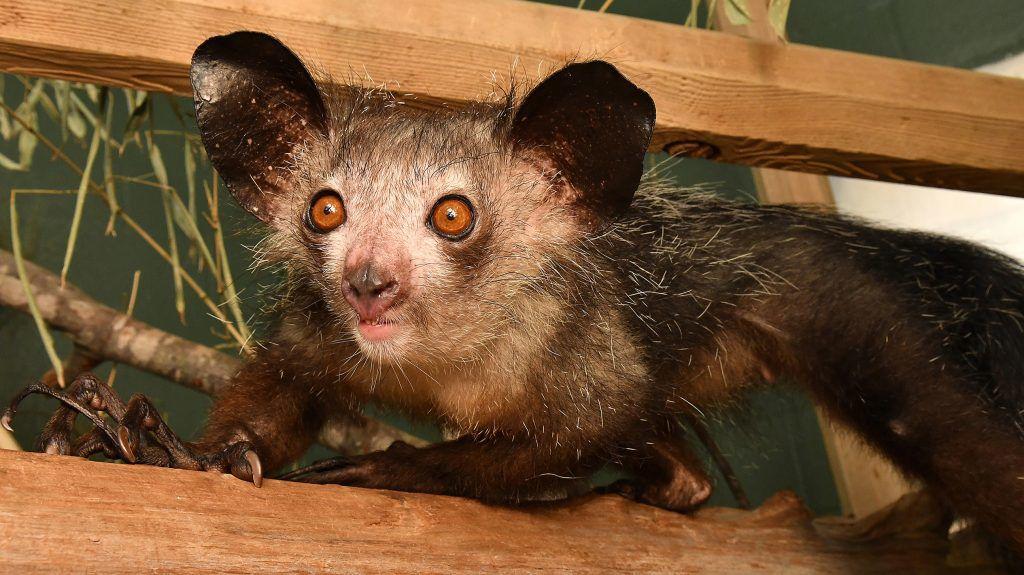NC State researchers in the Comparative Anatomy and Functional Morphology Research Lab Adam Hartstone-Rose, associate professor in the Department of Biological Sciences, and Edwin Dickinson, post-doctoral research scholar in the Department of Biological Sciences have recently discovered a new piece of anatomy in a primate species. They discovered that the aye–aye, a unique nocturnal primate, has a pseudothumb thought to aid in gripping when climbing.
“In our lab, we study comparative anatomy and functional morphology, which I usually describe as basically how animals do what they do,” Hartstone-Rose said. “Most of what we study is related to the masticatory apparatus, so how animals are adapted for the diet that they eat, and we also do a little bit of research on locomotion as well.”
Hartstone-Rose said that while their lab had dissected around 200 primates ranging from gorillas to pygmy marmosets, one of the smallest primate species in the world, he had never dissected an aye-aye, which he called the “strangest primate in the world.”
The aye-aye, Dickinson said, uses its specialized fingers, bat-like ears, and ever-growing incisors in a technique called “tap foraging” to feed.
“They use these ears and fingers and incisors to do the tap foraging behavior,” Hartstone-Rose said. “They will find a rotting piece of wood and use their skinny middle finger and tap seven or eight times per second on the surface of the wood … They actually make a mental map of the layout of the channels under the surface of the wood and they’ll chew a hole into the intersection, and then stick that crazy middle finger into the hole.”
This middle finger has a ball and socket joint, Dickinson said, which the aye-aye then uses to fish around in the wood to find grubs. He said the aye-aye is the only primate in the world with these ball and socket joint capabilities in its middle finger.
Dickinson said Marissa Boettcher, a co-author on the paper and former NC State lab manager, noticed when dissecting an aye-aye that a muscle called the abductor pollicis longus, which usually only attaches to the base of the thumb in primates, also went to a structure in the wrist.
“It turns out that not only is the abductor pollicis longus attached to it, but there were two other muscles, three muscles total, that were responsible for moving this little structure,” Hartstone-Rose said. “As we looked even closer, we realized not only does it have the capacity to move in the three different directions, but it even has its own fingerprint, and so we realized we kind of basically stumbled upon this strange piece of anatomy that no one, to our knowledge, ever described.”
After this discovery, Dickinson said digital imaging was used to visualize the muscle and tendon in a second aye-aye to confirm. He said that a total of seven samples were dissected in this research, some of which were provided by the Duke Lemur Center.
“It is a really exciting discovery for a couple of reasons,” Hartstone-Rose said. “The first is that it’s very rare to find a new piece of anatomy … The other thing that’s exciting about this study itself is that pseudothumbs are important from an evolutionary perspective.”
According to Hartstone-Rose, aye-ayes have long and skinny fingers because of their strange foraging behavior, making it difficult for them to grasp things.
“The problem is that aye-ayes, like most primates, live in the trees, so they still need to be able to grab hold of things, but they no longer could using their long, skinny fingers,” Hartstone-Rose said. “So we think that they evolved the extra digit in order to compensate for the skinny fingers.”
The research article, authored by Hartstone-Rose, Dickinson, Boettcher, and Anthony Herrel of the Muséum national d’Histoire naturelle in Paris can be read in the American Journal of Physical Anthropology here.








